https://youtu.be/21xXmeePhU4
Shimano or Sram? If we talk about mountain bike change groups, so far each manufacturer had an exclusive weapon with which the other could not compete. The electronic change was that of Shimano and the 12 -speed cassette that of SRAM.
However, this is about to change. It seems that SRM will soon present its new Eagle ETAP change without cables to deal with the electronic DI2 groups of Shimano. In fact, Nino Schurter has already proven the future wireless change of the North American manufacturer.
The Japanese, on the other hand, have just presented their new Shimano XTR range in society, which brings as the main novelty a 12 -speed cassette.
In 2016, the SAM change group manufacturer introduced to the market that, to date, meant the latest mechanical innovation in mountain bicycles. We talk about the Eagle versions for their SAM XX1, SRAM X01 and SRAM GX change groups. With them the first 12 -speed cassette also reached the market.
"The new Shimano XTR 12V group for Cross Country and Enduro is an advance of what the future Dura-Ace 12V group can be for road cycling"
This
SRAM EAGLE RANGE It was the definitive springboard for the takeoff of the monopathic transmission systems. Although two dishes systems remain the majority standard, the truth is that
The monopath has been gaining adherents Since he made an appearance the striking 12V cassette of SRAM with his imposing upper pinion of 50 teeth.
Since then, Shimano's response has been waiting. The faithful of the Japanese manufacturer, especially those who began to seduce the monopathic transmissions, demanded a blow to the table by Shimano to be able to make the jump from 1x11 to 1x12 without having to change their side and use the SRAM transmissions.
Even some media came to publish that Shimano prepared the launch of a 13V change group! It was called Shimano Xtr Fisherman 13V and was hypothetically I was going to have a 55 -teeth crown. However, this was nothing more than a Broma of the April Fools (although many came to give it as valid).
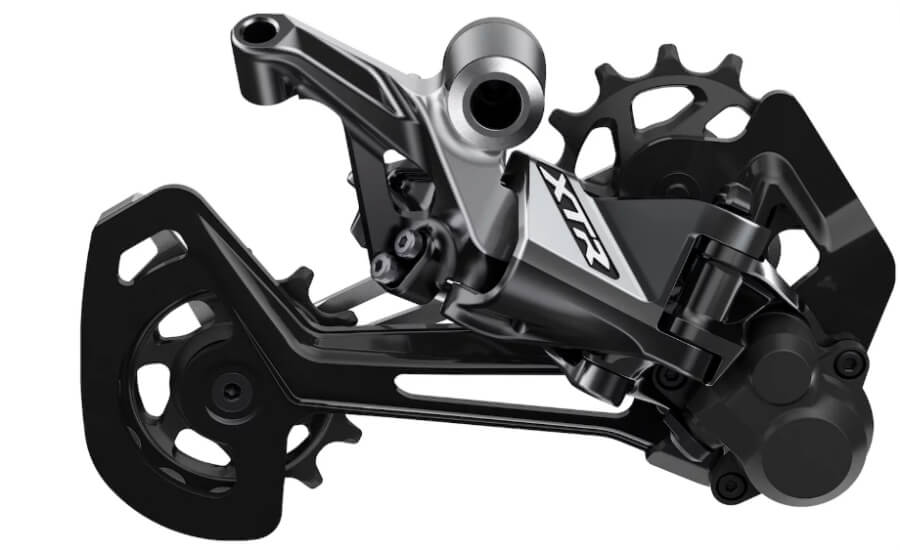
More than 2 years after SRAM broke the roof of the 11 speeds for Mountain Bike cassettes, Shimano has finally launched his 12V group. What can you expect from him?
SHIMANO XTR M9100 AND M9120 12V
The new
Shimano XTR 12V Change Group For mountain bicycles, it is not only the response of the Japanese mechanic to SRAM XX1 Eagle. It also anticipates what the future Dura-Ace 12V group can be with which Shimano presents battle to the
2x12 group that has recently presented Campagnolo For your record and super record ranges.
Actually, what Shimano has put on the market is not a new group for its XTR range, but two. Each of them is designed for a different typology. On the one hand we have the Shimano XTR M9100, with specifications for
Cross country. On the other, the Shimano XTR M9120, indicated for the Enduro segment.
These are two clearly differentiated and designed formats to meet different needs in the world of high competition. For example, one of the novelties that Shimano introduces are the four -piston brakes for its enduro version and a more resistant chain.
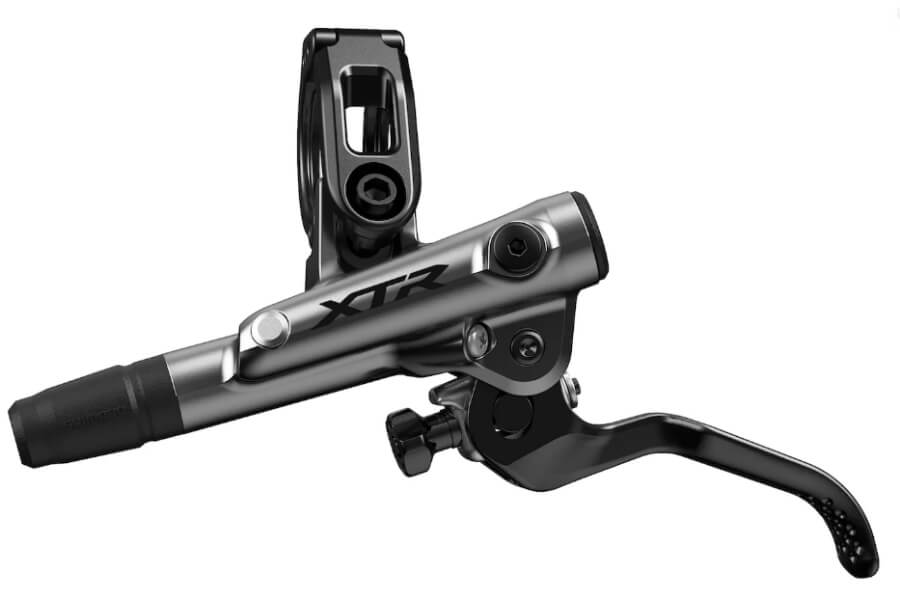
You can also choose different gears and transmission relationships, with both single -sequate systems. However, the main novelty is the possibility of setting up a 12 -speed cassette.
Technical innovations beyond 12v
Shimano's new XTR 12V change is more than an extra crown in the cassette to compete with SRAM Eagle groups. In fact, if the only reason to want to use it is the 12 speeds of the rear change, there is few difference with respect to the SRAM XX1.
Yes, other technical novelties that the Japanese manufacturer has incorporated, such as a remote control for telescopic typing. This element, which for most
Bikers It can be trivial, it can be a big difference for those who compete in enduro tests.
"It is not a range update, but a completely new group"
Another advance with respect to previous XTR ranges is the brakes. In fact, this section was one of the main criticisms that Shimano received. The
RIDERS More demanding did not conceive how the XTR groups had a more typical braking system of lower ranges than what should be the top of a brand like Shimano.
This new XTR 12V change group incorporates two totally new brake models, 2 and 4 pistons, with 10% less travel in the handle, which improves its drive without having to press thoroughly.
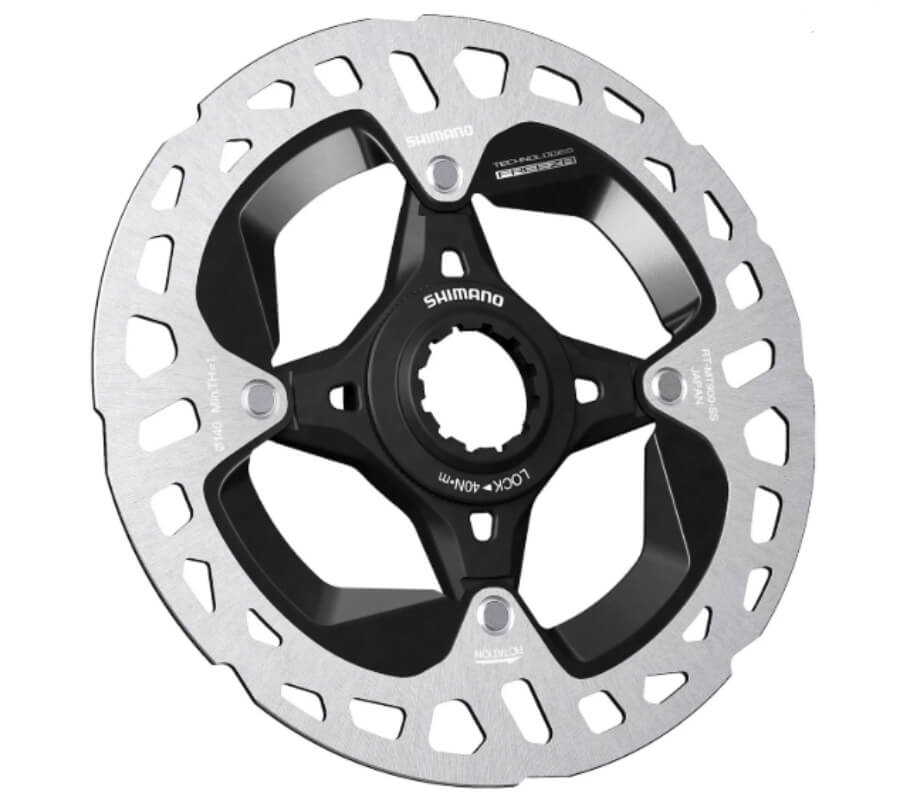
Direct assembly rods
Another novelty is in the connecting rods. In principle, since the new XTR group is designed for high competition, Shimano's commitment to lighten weight could be expected from the hand of carbon as material to manufacture the dishes and connecting rods.
Instead, the Japanese have preferred to bet on a direct connection system. That is, the dish is mounted directly at the base of the connecting rod without the need for an spider for anchoring. Shimano follows the path of manufacturers such as Specialized or Cannondale that once opted for these type systems
Direct Mount.
In this way, Shimano says they have lightened the set in 80 grams. Its weight is 511 grams for the 30D and 592 grams version version for the two M9100 dishes. Although the group has been developed for 1x12 transmissions, it also supports two -dishes.
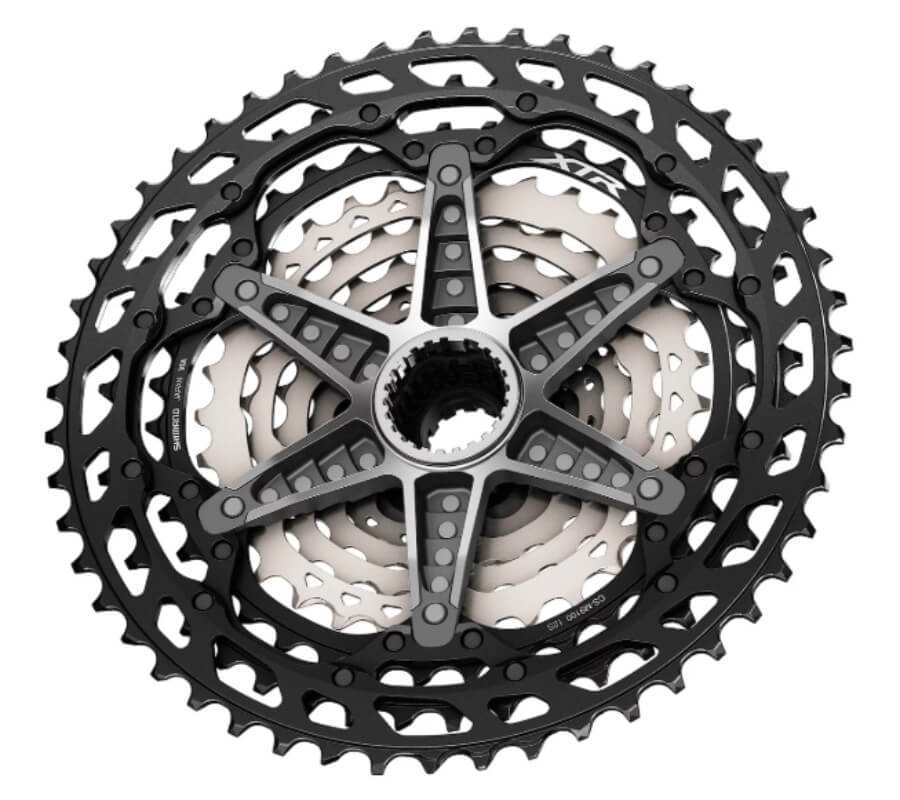
Shimano's new XTR 12V XTR 12V Group monoplato has 5 different plate options: 30, 32, 34, 36 and 38 teeth. The biplat version, meanwhile, is delivered with an upper plate of 38 teeth and one lower of 28.
Steel, aluminum and titanium
As we have already cited, the cassette is the main novelty that the new Shimano XTR group brings. But not only for the obvious jump to the 12 crowns, but for the differences of rigidity and weight with respect to the Cassette XTR HG-9001 11-40T.
On the first of these aspects, the new piñonera is 30% more rigid, thanks to the combination of materials that Shimano engineers have used: titanium, aluminum and steel.
"DT Swiss is the only manufacturer licensed to make wheels compatible with the new XTR 12V" cassette "
The four smaller crowns, which are the ones that suffer the most wear, are made of steel. The largest three are aluminum. The rest is an aluminum and titanium alloy. The result is an impressive weight of only 359 grams for development version 10-51 and 349 grams for 10-45. As a reference, the weight of an XX1 Eagle 12V cassette is 360 grams (and all the pine nuts except one are made of steel).
According to Shimano, this combination of materials provides greater stiffness and durability to the cassette.
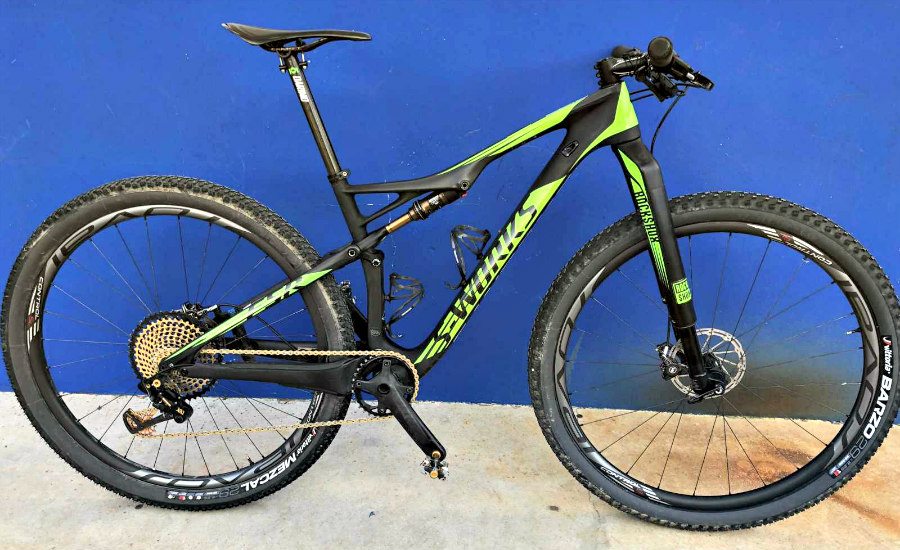
Differences with Sram Eagle
There are three development options for rear change, each of them for a specific type of use:
- SHIMANO XTR 12V 10-51: 10T-12T-14T-16T-18T-21T-24T-28T-33T-39T-45T-51T
- SHIMANO XTR 12V 10-45: 10T-12T-14T-16T-18T-21T-24T-28T-32T-36T-40T-45T
- SHIMANO XTR 11V 10-40: 10T-12T-14T-16T-18T-21T-24T-28T-32T-36T-40T
The three range options incorporate a 10 -teeth crown as a smaller pinion. In this aspect Shimano is equated with Sram. As for the largest crown, the Japanese manufacturer is committed to an imposing 51 -teeth pinion. It is just 1 more than the one that MRAM riddled (50). The big difference comes in how the march jumps are ordered until they reach the largest crown.
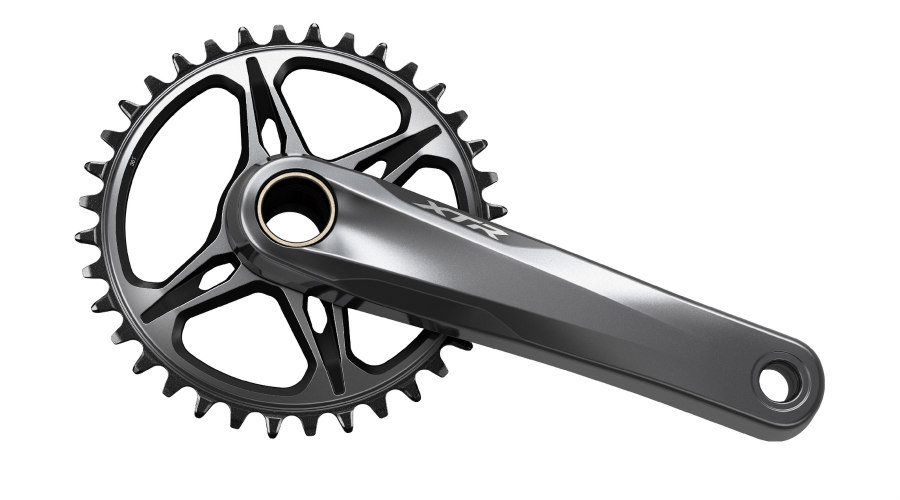
The 12V Eagle cassette of SRAM has 8 jumping teeth in its last 2 pine nuts (10T-12T-14T-16T-18T-21T-24T-28T-32T-36T-42T-50T). Shimano, on the other hand, has opted for more gradual relationship jumps, making a difference in the last four crowns.
For the
Bikers That they practice enduro or high slope marathon, this broader and gradual range offered by Shimano in the largest pine nuts can provide an advantage to find a more comfortable march without having to make a leap as large as the one proposed by SRAM.
Incompatibilities
If your mountain bike already has a Shimano XTR 11V change and your intention is to move on to 12V, there is bad news: it will not help you only buy the cassette. Shimano's new XTR 12V Group is incompatible with previous generations.
"Shimano seems to be launched definitively for the Mountain Cycling Mountain Transmission Market"
It is not a range update, but a completely new group. For practical purposes, the only compatible element of your current change with the new will be the wiring.

The new 12V cassette is not compatible with any wheel model. Moreover, it is not even compatible with other Shimano nuclei that is not the specific XTR range.
The Japanese manufacturer has patented a new nucleus that incorporates a microengranger system called Hyperglide+. The good news is that this system provides softer drive and allows continuously pedaling while development is changed to an upper or lower march.
On the other hand, at the mechanical level it is very different from the Hyperglide standard that had been using Shimano to date, to the point that you cannot mount the XTR 12V cassette (nor the 11V of the same range) in a nucleus of the previous XTR range .
So far, the only wheel manufacturer that has a license to mount the standard of the new XTR 12V core in Shimano is DT Swiss.
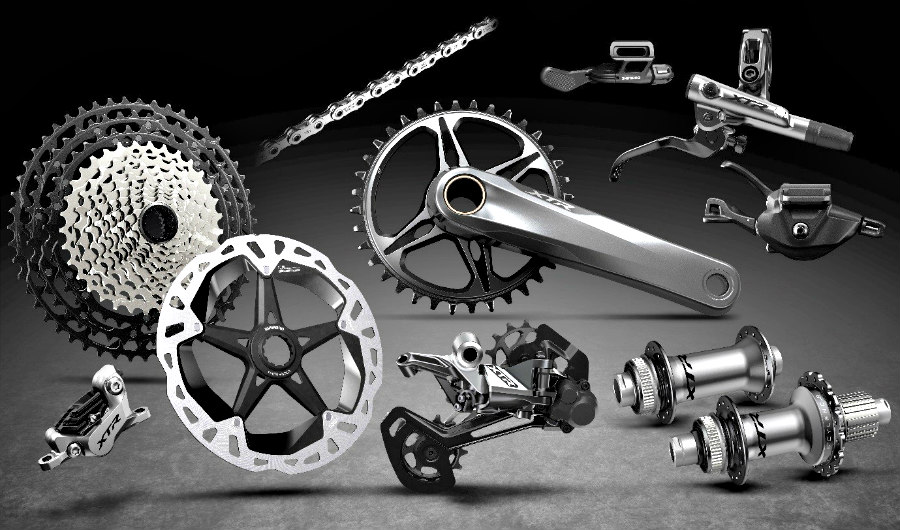
In summary, even with two years of delay, Shimano seems to be launched definitively for the monoplat transmissions market in mountain cycling. And he does it with a completely new group that not only anticipates the new transmissions scenario range of range in Cross country and Marathon, but also suggests what can be the next bet of the Japanese manufacturer for cycling on route: electronic change 12V .
 More than 2 years after SRAM broke the roof of the 11 speeds for Mountain Bike cassettes, Shimano has finally launched his 12V group. What can you expect from him?
More than 2 years after SRAM broke the roof of the 11 speeds for Mountain Bike cassettes, Shimano has finally launched his 12V group. What can you expect from him?
 You can also choose different gears and transmission relationships, with both single -sequate systems. However, the main novelty is the possibility of setting up a 12 -speed cassette.
You can also choose different gears and transmission relationships, with both single -sequate systems. However, the main novelty is the possibility of setting up a 12 -speed cassette.

 Shimano's new XTR 12V XTR 12V Group monoplato has 5 different plate options: 30, 32, 34, 36 and 38 teeth. The biplat version, meanwhile, is delivered with an upper plate of 38 teeth and one lower of 28.
Shimano's new XTR 12V XTR 12V Group monoplato has 5 different plate options: 30, 32, 34, 36 and 38 teeth. The biplat version, meanwhile, is delivered with an upper plate of 38 teeth and one lower of 28.

 The 12V Eagle cassette of SRAM has 8 jumping teeth in its last 2 pine nuts (10T-12T-14T-16T-18T-21T-24T-28T-32T-36T-42T-50T). Shimano, on the other hand, has opted for more gradual relationship jumps, making a difference in the last four crowns.
For the Bikers That they practice enduro or high slope marathon, this broader and gradual range offered by Shimano in the largest pine nuts can provide an advantage to find a more comfortable march without having to make a leap as large as the one proposed by SRAM.
The 12V Eagle cassette of SRAM has 8 jumping teeth in its last 2 pine nuts (10T-12T-14T-16T-18T-21T-24T-28T-32T-36T-42T-50T). Shimano, on the other hand, has opted for more gradual relationship jumps, making a difference in the last four crowns.
For the Bikers That they practice enduro or high slope marathon, this broader and gradual range offered by Shimano in the largest pine nuts can provide an advantage to find a more comfortable march without having to make a leap as large as the one proposed by SRAM.
 The new 12V cassette is not compatible with any wheel model. Moreover, it is not even compatible with other Shimano nuclei that is not the specific XTR range.
The Japanese manufacturer has patented a new nucleus that incorporates a microengranger system called Hyperglide+. The good news is that this system provides softer drive and allows continuously pedaling while development is changed to an upper or lower march.
On the other hand, at the mechanical level it is very different from the Hyperglide standard that had been using Shimano to date, to the point that you cannot mount the XTR 12V cassette (nor the 11V of the same range) in a nucleus of the previous XTR range .
So far, the only wheel manufacturer that has a license to mount the standard of the new XTR 12V core in Shimano is DT Swiss.
The new 12V cassette is not compatible with any wheel model. Moreover, it is not even compatible with other Shimano nuclei that is not the specific XTR range.
The Japanese manufacturer has patented a new nucleus that incorporates a microengranger system called Hyperglide+. The good news is that this system provides softer drive and allows continuously pedaling while development is changed to an upper or lower march.
On the other hand, at the mechanical level it is very different from the Hyperglide standard that had been using Shimano to date, to the point that you cannot mount the XTR 12V cassette (nor the 11V of the same range) in a nucleus of the previous XTR range .
So far, the only wheel manufacturer that has a license to mount the standard of the new XTR 12V core in Shimano is DT Swiss.
 In summary, even with two years of delay, Shimano seems to be launched definitively for the monoplat transmissions market in mountain cycling. And he does it with a completely new group that not only anticipates the new transmissions scenario range of range in Cross country and Marathon, but also suggests what can be the next bet of the Japanese manufacturer for cycling on route: electronic change 12V .
In summary, even with two years of delay, Shimano seems to be launched definitively for the monoplat transmissions market in mountain cycling. And he does it with a completely new group that not only anticipates the new transmissions scenario range of range in Cross country and Marathon, but also suggests what can be the next bet of the Japanese manufacturer for cycling on route: electronic change 12V .












